






“The longing for Paradise is man’s longing not to be man.”
MILAN KUNDERA

“There is no perfection only life.” Milan Kundera

REALM OF THE SENSES
“But is heaviness truly deplorable and lightness splendid? The heaviest of burdens crushes us, we sink beneath it, it pins us to the ground. But in the love poetry of every age, the woman longs to be weighed down by the man’s body. The heaviest of burdens is therefore simultaneously the image of life’s most intense fulfillment. The heavier the burden, the closer our lives come to the earth, the more real and truthful they become. Conversely, the absolute absence of a burden causes man to be lighter than air, to soar into heights, take leave of the earth and his earthly being, and become only half real, his movements as free as they are insignificant. What then shall we choose? Weight or lightness?”
MILAN KUNDERA, THE UNBEARABLE LIGHTNESS OF BEING






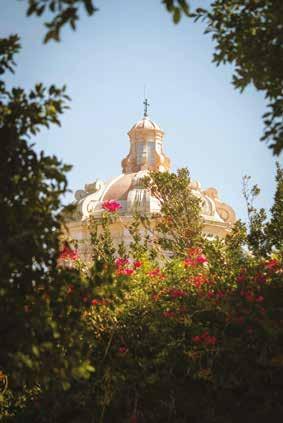
6
LA DOLCE VITA.
Sanctuary Seekers. Caribbean Ultimate Island Hideaway–Cap Juluca. 16 INTERIORS
Sean Scherer’s Vignettes. Composing Vignettes of Favourite Objects. 26
FRAGRANCE
A Philosophy of Scent –Part 3. The Realm of the Senses and the Sublime in Our Everyday Lives. A look at Chanel‘sÉgoïsteand Coco Mademoiselle.
30
Not a Zero Sum Game. Advancing the Rights of All. 36 MELITENSIA
The Restoration of the Oratories at the Jesuit Church in Valletta. Heraldry –Of Helms and Crests.
CONCOURS D’ELEGANCE
Masterpieces of Design. Valletta Concours 2024. 61 EXHIBITION
Victor Pasmore. The Eye and The Symbol.
65 GASTRONOMY
Restaurant 1890 by Gordon Ramsay. Intimate Dining at The Savoy.
76
SUSTAINABILITY
Notes on Green. Falling Back in Love with Nature. What’s the Buzz? Greening Projects.
81 MONEY TIPS THE SAVVY SAVER. Financial Security in a Fast-Paced World.
86
HEALTH & WELLBEING
Glow Smart. The Essential Summer Guide to Sun Protection and Skin Care.






A white-washed architectural gem crowning one of the world’s best beaches, Cap Juluca is the ultimate expression of barefoot luxury. Having started life as a culinary destination and soon expanded into a boutique hotel for those in-the-know, it remains an intimate island retreat full of local soul.
Photography courtesy Belmond.
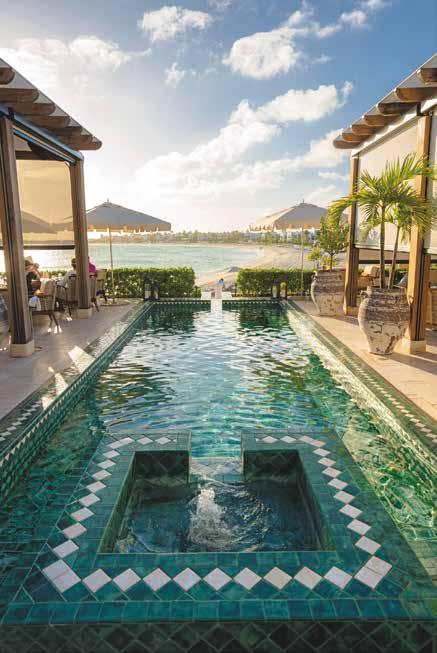

Nearly 3500 years ago, Arawak explorers from South America set sail in search of a new home. They would discover a 20-mile stretch of pristine sand in the Caribbean Sea, dubbing the land Malliouhana, meaning ‘arrow-headed sea serpent’ in reflection of the island’s shape. They established farms and villages, creating ceremonial sites to honour the spirits of the island. It wasn’t long before the rest of the world realized that such a treasure had been found. European settlers would arrive, with the Spanish renaming the island Anguilla. The English and the French vied for control of the island for over 150 years, with Anguilla eventually settling as a British overseas territory.
In 1987 Pimms was established as a destination restaurant, and less than a year later a hotel was built around it. Owners Sue and Robin Ricketts decided to name the hotel after the Juluca – the Arawak rainbow spirit, which was an apt choice in more ways than one. After a light rain, the sun will always return to spread colour across the bay. Moreover they believed that there was an Arawak spirit of joy perpetually found on Maunday’s Bay, citing it as one of the reasons guests would return year after year.






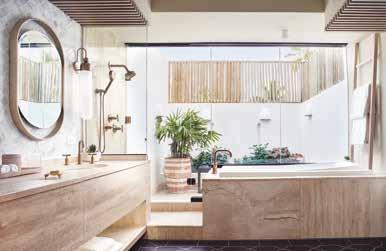

Set across 179 acres on Anguilla’s southwestern end, Cap Juluca is nestled in two crescent-shaped coves on Maundays Bay. Fusing the island’s laid-back spirit of tranquillity with a refined sense of indulgence, the resort became a magnet for the global jet set: a place where people from across the world could come together with locals to form a newfound family.
Acquired by Belmond in May 2017, the property underwent a $121 million top-to-toe renovation and redesign. Designed to create a sense of calm and total escapism every detail by US design firm Rottet Studio, complements the outstanding natural beauty of the view and signature Greco-Moorish architecture. The result is a world of timeless glamour and barefoot luxury that is as beguiling as the setting itself.
As guests approach the Main House and heart of the resort, the high domed ceiling is deliberately designed to reveal and dramatically frame the mesmerising view. The resort invites exploration and discovery; with lush hanging botanicals, a shaded courtyard with a deep green tiled Moroccan pool and sensitively placed locallycrafted artefacts, sculptures and botanical prints sourced from V&A London. The aesthetic reflects the style of a private residence that over the decades has acquired beautiful keepsakes from across the globe. The handcrafted limestone floor tiles have been purposely selected to entice guests to walk barefoot, as though meandering through their own home.





Seamlessly connecting the Main House with the cove of Maundays Bay, is the stunning palm-lined terraces with sea view infinity-edge pool. The show-stopping new space offers guests the best of both worlds –direct access to the beach and shaded corners to enjoy refreshing cocktails and healthy poolside tapas.
Located along one of the most spectacular beaches on Anguilla, the 108 newly designed rooms and suites embrace laid back island life –with cosy nooks to read and write and space to dine alfresco. The outrageously large bathrooms open onto walled botanical courtyards, providing serene sanctuaries for relaxation. Flowing natural fabrics, injected with a mix of blues, greens and botanical prints, along with the clever use of handcrafted dark grey floor tiling create an instant sense of calm in a space flooded with natural light.


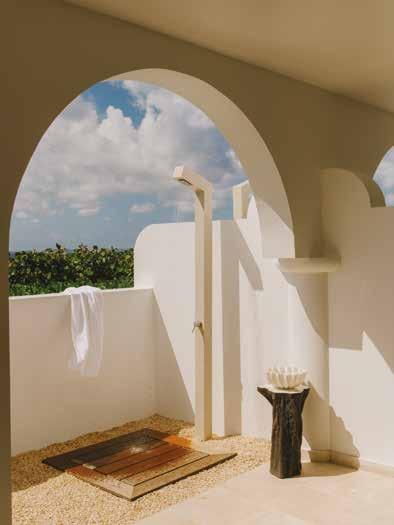

Three and five-bedroom private villas offer generous space for families and groups of friends to embrace the exclusivity of dining, swimming and socialising in private but with front row access to the island’s best beach.
Mornings begin with an invigorating ‘swim to breakfast’, where staff meet guests at the water’s edge of Cip’s by Cipriani with a fresh towel, robe and fruit juice in hand. Stylish pedal bikes and VW vans, painted in the resort’s signature colour turquoise, provide a novel way to potter about the property.
This year Cap Juluca announced the launch of the property’s brand-new spa in collaboration with Guerlain, from June 2024. Cap Juluca Spa by Guerlain draws inspiration from Anguilla’s earliest inhabitants, the indigenous Arawak tribe who celebrated the renewal and rejuvenation of each new day, while offering a harmonious connection with nature and a rebalance of energy. A private hideaway located in the most coveted sanctuary of the dazzling shores of Anguilla, this secluded wellness paradise is a haven of relaxation, where guests will enjoy a collection of Guerlain rituals exclusive to the iconic resort.
ABOUT BELMOND Belmond has been a pioneer of luxury travel for over 45 years, building a passion for authentic escapes into a portfolio of one-of-a-kind experiences in some of the world’s most inspiring destinations. Since the acquisition of the iconic Hotel Cipriani in Venice in 1976, Belmond has continued to perpetuate the legendary art of travel. Its portfolio extends across 24 countries with 50 remarkable properties that include the illustrious Venice Simplon-Orient-Express train, remote beach retreats like Cap Juluca in Anguilla, Italian hideaways such as Splendido in Portofino, or unrivalled gateways to world natural wonders such as Hotel das Cataratas inside Brazil’s Iguazu National Park.



DESIGNER, COLLECTOR, AND PROPRIETOR OF THE CONTEMPORARY CURIOSITY SHOP KABINETT & KAMMER, SEAN SCHERER SHARES HIS SECRETS FOR COMPOSING VIGNETTES OF FAVOURITE OBJECTS, SHOWING CREATIVE WAYS TO INCORPORATE BOTH CHERISHED POSSESSIONS AND FLEA-MARKET FINDS



How do you make your home come alive with personality, charm, and memory? In the introduction to Sean Scherer’s first book, Kabinett & Kammer: Creating Authentic Interiors, Anderson Cooper writes, “Scherer has a unique ability to place otherwise ordinary objects in a completely unexpected context or grouping and in so doing change the way you see them.” In his new book, VIGNETTES, Scherer focuses in on the art of combining common objects into aesthetically pleasing groupings, or vignettes. Contending that a vignette can set the whole mood and tone of a room, he shows how to use any surface in your home, from a tabletop to a bookshelf to a wall, to create lively displays of your favourite items. Beautifully illustrated with Scherer’s own photographs, the book demonstrates how to balance colour, texture, and shape, and provides lessons on how to create both symmetrical and asymmetrical vignettes.
Photography by Sean Scherer, courtesy Vendome Press.

“The only real freedom we have left is the home. Only there can we express anything we want.”
WILLIAM HAINES



Above left: The windswept branch not only lends a sense of movement to but also balances this asymmetrical vignette.
Above right: A ball made from dried vines is an example of the fun of throwing in a surprise element now and then.
Left: The trio of green items in this vignette form a triangle that moves the eye around the composition.
“Your home is your sanctuary, the place where you can be yourself and give free rein to your self-expression. Indeed, a fundamental principle of interior design is that the best rooms reflect the personality of those who live there. And it is often the small items that best set the tone,” writesSean Schererin introduction to his book Vignettes.
In this era of constant change and innovation, the Artie novelties blend in perfectly with the Hometrends existing collection, creating a unique ambiance that brings people together.


winning international design team



the shelves of an open cupboard. Below right: Discarded clockfaces make a surprising and joyful wall grouping.
“Groupings of such objects–on surfaces from coffee tables to dresser tops to mantels, shelves, and walls–are called vignettes, and talk of vignettes is now everywhere, from décor magazines to homerenovation and real-estate TV shows to Instagram and Pinterest. Everyone extols the value of these compositions of art and objects; they’re often described as interior design tricks to give a home that “magazine-worthy“look. But a great vignette embodies so much more meaning and history.”






Above: A collection of white seashells pops against the black interior of the display case. Right: A faux van Gogh painting inspired this vignette. Below right: An antique barrel lid is hung as a sculpture above an asterisk-shaped yarn winder and a wire bowl filled with wooden game balls. This vignette is an example of how the ordinary can become extraordinary in combination.
“Before vignettes became all the rage, there was the still life. Artists have been selecting and arranging things to paint for centuries. Among the earliest examples are still-life paintings adorning the walls of Egyptian tombs, and similar still lifes were discovered on the walls and in the floor mosaics of unearthed villas at Pompeii and Herculaneum.“
“Still-life painting developed as a genre in the late sixteenth century in the European Low Countries and derives from the Dutch word stilleven.Around the same time, an obsession with the natural world took hold. When seafarers returned from exploring the globe, they introduced new wonders like exotic seashells, tropical fruits, and flowers. One of the most famous was the tulip, introduced to Europe from the Ottoman Empire....And this influx of new natural wonders became a bountiful resource for artists.“
“Vignettes are essentially still lifes of favourite artworks and objects, arranged to elevate the individual items through their combination and create harmony within the composition. Each grouping is a little tablescape that has meaning and narrative. Any flat surface will suffice.“
“It’s human nature to pick and collect, and early archaeological records provide evidence that our obsession with objects is universal. So it makes sense that we are all attracted to beautiful things, whether a souvenir brought back from a vacation or that coveted item your grandma had in a display case. There is hardly anything we do not collect.“




“Looking is vital. I always go through a mall or show at least two or three times. First in one direction and then in the opposite direction, careful about where I train my eye. For example, we don’t often look down when we walk, but many beautiful things are often leaning against walls on the floor. I can guarantee that you will spot a missed treasure on repeat viewing. I have discovered many of my favourite finds that way.”

ABOUT THE AUTHOR. SEAN SCHERER, the author of Kabinett & Kammer: Creating Authentic Interiors, which has acquired a cult following, studied at the School of the Art Institute of Chicago and the Independent Study Program of the Whitney Museum of American Art in New York. In 2002, he moved to the Catskills, where he opened Kabinett & Kammer, a contemporary curiosity shop of antiques, natural wonders, and art that serves as a visual medical, botanical, and zoological design resource. His shop and design work have been featured in the New York Times, the Detroit News, Country Living, the Sunday Times (UK), and elsewhere. For 15 years, Scherer taught art history and design at the State University of New York at Oneonta. He now teaches Domestika’s online course Composition and Styling for Interior Design. He lives in Franklin, New York.
SEAN SCHERER’S VIGNETTES bySean Scherer.Photography by Sean Scherer. Published by Vendome Press. Hardcover. 150 colour illustrations, 208pages.


The idea of the good or the beautiful is something we all opine for. We yearn for good and beautiful things, and we also have a deep innate desire to perceive, and have proof of a greater, more beautiful and better Being or existence other than what the world in its everyday occurrences offers us. On a deeper level, we yearn to know and to have an intimate connection, even communion, with what is good and beautiful, not as relative attributes but rather as an infinitely boundless absolute. If there is a characteristic of being human it is to dream bigly and boldly, writes Kris Bonavita.
PHOTOGRAPHY COURTESY CHANEL.
This is not to say that the world in all its senses and through all the senses is not available to us in its physical format as a means of understanding and appreciation. Nor is it to say that in its immanent hard and fact state, what we perceive and understand about the world, is not there to be appreciated and consummated and in droves. Rather the opposite, it is the realm of the senses that gives us an inkling of self-worth and appreciation; if for any other reason as a distantiation or slide rule from what we are not; to affinities and similarities of what we perceive ourselves and maybe in fact are.
The realm of the senses; sight, smell, touch, sound; opens us to the possibility and dimension of being as individuals; existing in this world with very distinctive wants, desires and understandings and also a hint of the beyond. A beyond that starts its life in how we perceive the world and works its way up to a transcendental format of ideas, beliefs, emotions and states of being and knowledge, far removed from the limitations of the immediately perceivable, limited, and bounded constrictions of the every day, and closer almost tantalisingly touching on the ecstatically sublime.
Humans are interested in the sublime. We spend our entire lives for better or for worse dictated and engineered knowingly or unknowingly to reach, perceive and maybe even sublimate ourselves into something or some other sublime. It is not just a pursuit of the pleasures in their crass enjoyment or physical contentment, but something far more ethereal, visceral, innate and constitutive of our being and identity.
We are above all yearners of the sublime and at the pinnacle of that inner yearning, are stratified layers of perceptions; permanently restoring and reconfiguring themselves as ways of seeing and knowing the world; reassessing the level of beauty and goodness in a relationship or dialectic of sorts. In seeing and perceiving the world we converse with the world by conversing in and of ourselves with our inner thoughts; self-identifying or delineating to what extent things or persons are enjoyable, beautiful, benevolent or not; and in so doing, we set standards and limitations to what we think we know of the world and how we constitute our own sense of identity from that thinking; as far removed, very similar or very different but in some way very related.
At the centre of this realm of the senses we do not just place ourselves as subjective matter but as part of the human tragedy, we yearn and feel alone; never quite whole, somewhat lacking, requiring an other, whoever or whatever that other may be. We are never entirely satisfied or satiated and for good reason. Not on some ethical ground of seeing the superficial as nothing else; but rather because we are innately made up to be inquisitive, curious, bold and courageous in trying to create a better place, better selves, a more beautiful and profound thing. And in so being and so doing we are continuously rewriting our fate, unweaving the past and reknitting ways in which the future could offer us more potential, more hope and more beauty, a feeling or glimpse or knowledge of a better world, even if just fleetingly hanging on a delicate thread of finite existence.
Facing page: WHITNEY PEAK THE FACE OF COCO MADEMOISELLE FRAGRANCE. Whitney Peak is a young Canadian actress at the dawn of her career. She landed one of the lead roles in the reboot of the “Gossip Girl” series, and also starred as the lead in “Hocus Pocus 2” by Anne Fletcher. The relationship Whitney Peak has developed with CHANEL keeps evolving over time. First as brand ambassador for the US market, then muse of the 22 Handbag campaign, and now as the face of the COCO MADEMOISELLE fragrance. Whitney Peak’s joy, spirit, and energy are contagious. She is the embodiment of today’s youth whose curiosity, confidence in life, appetite for experiences and lack of preconceptions echo the temperament of the young Coco Chanel. She is the incarnation of COCO MADEMOISELLE’s original personality, a young woman who moves towards her destiny to become who she truly is and wants to be. Photograph courtesy CHANEL.
Égoïste! Où es-tu? Montre-toi misérable! Prends garde à mon courroux! Je serai implacable! Ô rage! Ô désespoir! Ô mon amour trahi! N'ai-je donc tant vécu que pour cette infamie? Montre toi, Égoïste!
Egoist! Where are you? Show yourself, miserable one! Beware of my wrath! I will be relentless! O anger! O despair! O my betrayed love! Have I lived so long for this infamy? Show yourself, Egoist!
Script from Chanel's first advertising campaign, “Le Carlton”, used to launch Égoïste, adapted from Pierre Corneille’s tragicomic play Le Cid
Égoïste Eau de Toilette started life under the more humble name of Bois Noir or Black Wood in the 1980s, and was the first male fragrance having sandalwood as its main note. The perfume was rebranded and catapulted into fame through the iconic success of its eponymously themed television commercial in the 1990s. Set to the soaringly dramatic score of Sergei Prokofiev’s ballet Romeo and Juliet, women in ball gowns slammed 36 balcony doors open and shut, shouting lines from the tragi-comedy Le Cid "Égoïste. Où es-tu? Montre-toi!" - Egoist, where are you? Show Yourself!
Created by Maison Chanel’s Master perfumer Jacques Polge; Égoïste sums it all up in bold oil laced green wood tones of rich vibrantly fresh light induced but equally warm and exotic layers. Tender notes of sweet but austere flowery and earthy elements; rosewood, coriander, mandarin and mahogany; slowly open up to a touch of cinnamon, rose and carnation before revealing a sleek and serene trail of sandalwood, tobacco, leather, vanilla, amber and musk mallow.
The tour de force of this masculine scent is the balance between the flowers, woods and spices
ensuring a soft yet taut tension between the filigree of the sweeter fresher powdery notes and the ardent strengths of the more powerfully linear virile deeper elements.
On the other end of the time spectrum, Coco Mademoiselle Eau de Parfum was created by Jacques Polge at the turn of the 21st century. Its dual name sports two facets of the legendary fashion diva; part seductive mystery, part alluring elegance.
Exuberant top notes of voluptuous patchouli and vetiver vie with warm soft tones of amber accord, giving the fragrance a youthful debonair appeal with a tonka bean and vanilla sweet depth. Fast moving citrus overtones; orange mandarin, grapefruit and bergamot, provide a sparkly ambience; while powdery flowery notes of jasmine, ylang-ylang and rose add a rich and long lasting fade or trail. White musk, iris and lychee also make their playful mark. Youthful, energetic and captivating, Coco Mademoiselle comfortably finds its place as a worthy rendition of Maison Chanel’s core perfume philosophy. This is complex, ultra modern and effortlessly versatile.
CHANEL is distributed by Alfred Gera & Sons Ltd.
Facing page: Égoïste –a bold and rich woody fragrance in a masculine bottle with clean, sharp lines. A unique woody-spicy-ambery composition with an intense personality. Lively, fresh top notes of mandarin and coriander, subtly spiced, blend into the warm and enveloping notes of damask rose. The richness of sandalwood is underlined by vanilla and ambrette seed for a sensual trail. Photograph courtesy CHANEL.
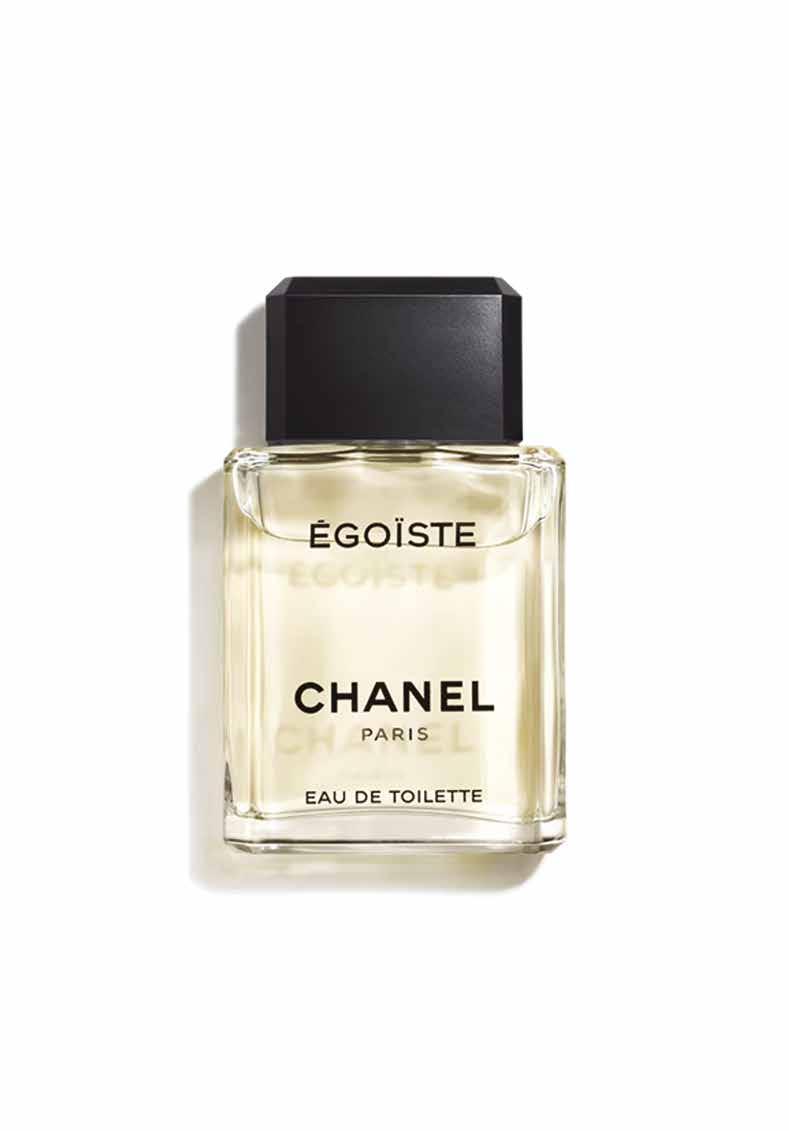
THE ORIGINS OF PRIDE: THE STONEWALL RIOTS June is a month filled with unity as people worldwide celebrate Pride, a powerful reminder of the ongoing fight for equality and the historical struggles that paved the way for today's freedoms. Pride Month's origins are deeply rooted in the 1969 Stonewall Riots, a pivotal moment that ignited the modern LGBTQ+ rights movement. The Stonewall Inn, a gay bar in New York City's Greenwich Village, was a sanctuary for the LGBTQ+ community, offering a rare safe space amidst rampant discrimination and police harassment. On June 28, 1969, a police raid at the Stonewall Inn sparked an uprising. Patrons, tired of the constant oppression, fought back, leading to several nights of protests and clashes with law enforcement. Key figures like Marsha P. Johnson and Sylvia Rivera, transgender activists, emerged as significant voices in the struggle for LGBTQ+ rights. The courage and resilience displayed during the Stonewall Riots marked a turning point. In the aftermath, the first Pride marches were organized to commemorate the riots and celebrate LGBTQ+ identity. On June 28, 1970, the one-year anniversary of the Stonewall Riots, the first Gay Pride marches took place in New York City, Los Angeles, and Chicago, marking the beginning of a tradition that has grown exponentially over the decades.





marks the 20th anniversary of the first Pride March in Valletta, organised by the Malta LGBTIQ+ Rights Movement. Back in 2004, around 50 brave activists and allies gathered amidst heavy police presence, carrying a banner that read, “Gay Rights? Human Rights!” At the time, the term "gay" was often whispered, and those who were openly part of the LGBTIQ+ community faced significant societal prejudice. The pride march was not a celebration but a call for recognition and equal rights, writes the team at the Parliamentary Secretariat for Equality and Reforms.
Main photography courtesy Parliamentary Secretariat for Equality and Reforms.

ll are equal before the law and are entitled without any discrimination to equal protection of the law.” This principle from Article 7 of the Universal Declaration of Human Rights is fundamental. Malta has made significant progress in promoting and protecting LGBTIQ+ rights due to the relentless efforts of civil society, dedicated NGOs, political will, and a public sector ready to adapt to change. The vibrant and inclusive spirit of Malta was showcased during EuroPride Valletta 2023, marking an important milestone in the journey of the LGBTIQ+ community. The Human Rights Directorate has been a contributor in ensuring continued progress.
International human rights laws provide the framework for our advancements.
The right to health, freedom of assembly and expression, education, and privacy and family life are fundamental rights that LGBTIQ+ individuals in Malta were previously deprived of. Over the past decade, significant reforms and robust legal protections have been enacted, such as the Gender Identity, Gender Expression, and Sex Characteristics Act (GIGESC Act) and the Affirmation of SOGIGESC Act. These laws ensure equal treatment, dignity, and respect for everyone, regardless of their sexual orientation, gender identity, gender expression, or sex characteristics. Soon, parliament is expected to amend the GIGESC Act to legally recognize non-binary persons, a previously invisible group.
Passing legislation is just the beginning. The Human Rights Directorate is committed to

educating and informing the public through awareness and informational campaigns, ensuring all sectors of society are sensitized.
On May 17, 2023, the International Day against LGBTIQ+ Phobia, the Maltese Government launched its 3rd LGBTIQ+ Equality Strategy and Action Plan for 2023-2027. The SOGIGESC Unit, in partnership with civil society and LGBTIQ+ NGOs, crafted an ambitious plan to promote equality across various sectors. This strategy ensures that everyone, from young people to employees, migrants, and the elderly, can live free from fear and discrimination.
Education is the cornerstone of understanding and respect. Over the past year, numerous sensitivity training and capacity building sessions have been held for educators, public registry officials, police officers, and various entities. These sessions aim to foster an inclusive environment and enhance support for LGBTIQ+ individuals in all aspects of life. Additionally, resources such as a media reference guide and a queer dictionary in both English and Maltese have been published to help reporters write sensibly about LGBTIQ+ matters. Additionally, the Human Rights Directorate has collaborated with the Malta LGBTIQ+ Rights Movement (MGRM) and the University of Malta to support LGBTIQ+ research through the hosting of a symposium and publication of the 3rd edition of ‘Mapping the Rainbow’. Other data and research published over the past year, like the NSO Census on sexual orientation, the European Barometer on Discrimination and the FRA LGBTI III Survey guides the directorate in ensuring that efforts are concentrated where it is needed most.


Top: The LGBTIQ+ Human Rights Conference was organised as part of EuroPride Valletta 2023. The multiday conference focused on building bridges across the Mediterranean Sea and aimed to take stock of the progress and challenges in the advancement of LGBTIQ+ rights in this geographic region, while creating an opportunity to share experiences and good practices in order to strengthen and identify room for improvement in the efforts towards LGBTIQ+ equality and non-discrimination. The sessionsrecognised the multi-faceted lives of LGBTIQ+ persons and discussed persisting themes which remain relevant to the community internationally. Above and above right: The Human Rights Directorate has collaborated with the Malta LGBTIQ+ Rights Movement and the University of Malta to support LGBTIQ+ research through the hosting of a symposium and publication of the 3rd edition of ‘Mapping the Rainbow’. Below: Education is the cornerstone of understanding and respect. Resources such as a media reference guide and a queer dictionary in both English and Maltese have been published to help reporters write sensibly about LGBTIQ+ matters.



The Human Rights Directorate has secured a government-owned property in Valletta to transform into an LGBTIQ+ Community Centre through the LANDS Authority. This centre will be a beacon of support and inclusivity, offering a safe space for socializing, accessing resources, and receiving wellbeing services and counselling. Alongside the gender wellbeing services operating since 2018, agreements with organisations like FSWS will provide psychosocial services, and Checkpoint Malta will offer sexual health testing.
Malta actively participates in international forums such as the Council of Europe’s ADISOGIESC expert group, the European LGBTI Governmental Focal Points Network (EFPN), the Equality Rights Coalition, and the EU LGBTIQ Equality Subgroup. These platforms are crucial for exchanging success stories, promoting LGBTIQ+ rights, and influencing positive changes globally.
The Malta Diversity & Inclusion Charter, supported by the Human Rights Directorate and championed by the NGO CORE Platform, guides workplaces to adopt inclusive policies, fostering more equitable environments. Since its launch to date, 24 entities have endorsed this Charter, ranging from public sector entities, banks, associations, educational institutions and more.


Civil society and NGOs have been crucial in advancing LGBTIQ+ rights in Malta. Organisations like the Malta LGBTIQ+ Rights Movement (MGRM), Allied Rainbow Communities (ARC), Drachma and LGBTI+ Gozo play vital roles in advocating for the community and their families. These groups are part of the LGBTIQ+ Consultative Council, ensuring that the voices of the community are heard in policymaking and also supported in initiatives towards that align with the LGBTIQ+ Equality Strategy and Action Plan.
Left and above: Malta has made significant progress in promoting and protecting LGBTIQ+ rights due to the relentless efforts of civil society, dedicated NGOs, political will, and a public sector ready to adapt to change. The vibrant and inclusive spirit of Malta was showcased during EuroPride Valletta 2023, marking an important milestone in the journey of the LGBTIQ+ community. Below: The Human Rights Directorate has secured a government-owned property in Valletta that will be transformed into an LGBTIQ+ Community Centre through the LANDS Authority. Minister for Lands and the Implementation of the Electoral Programme Stefan Zrinzo Azzopardi and Parliamentary Secretary for Equality and Reforms Rebecca Buttigieg announce the new investment for the LGBTIQ+ community. Photo Jeremy Wonnacott.




The future of LGBTIQ+ rights in Malta relies on continued collaboration between the Human Rights Directorate, civil society, public and private sector and NGOs. Focus areas include more inclusive educational curricula, eradicating disinformation which is a breeding ground for hate speech and hate crimes, expanded support services, and ongoing training. The commitment to creating a society where everyone can thrive, regardless of
their sexual orientation, gender expression, or sex characteristics, The journey towards LGBTIQ+ highlights the power of collaboration importance of international human As we celebrate the 20th anniversary first Pride march, we recognize strides made and reaffirm our equality and inclusion. Together, continue to work towards a future diversity is celebrated, and everyone with dignity and respect.






The original layout of the Jesuit complex in Valletta, now the University of Malta Valletta Campus and the Jesuit’s Church, is attributed to Padre Giuseppe Valeriano (1542-1596), a Jesuit painter and architect from Naples. It was subsequently modified over the centuries. Now the recently completed restoration of the Oratories of the Immaculate Conception and of the Assumption of Our Lady (Onorati) at the Jesuit Church in Valletta has unveiled and given new life to two jewels hidden in plain sight writes the team at the Restoration and Preservation Department.
Photography courtesy Restoration and Preservation Department.


The Jesuit complex in Valletta comprises two parts: the church and the collegium. The former is dedicated to the Circumcision of Our Lord and is the first Latin cross church on the island; the latter served as a top-quality grammar school and eventually a university.
Adjoining the church are two oratories, one dedicated to the Immaculate Conception and the other to the Assumption. The latter is popularly known as the Oratory of the Onorati. These spaces were set aside for meetings and worship by members of confraternities who originated from the collegium academic classes.
The explosion of a nearby polverista on October 12th 1634 damaged

parts of the complex. Repairs in 1637 provided the opportunity to embark on improvements entrusted to Francesco Buonamici (15961677), an architect and military engineer from Lucca working for the Order of St John.
The Oratory of the Immaculate Conception in its current form dates to the seventeenth century, resulting from this spurt of improvements. While oratories at the time were austere and plain spaces, this oratory is ornate with crisp and exquisite sculpture, richly finished, and adorned with a cycle of paintings depicting episodes from the life of the Virgin, believed to be the work of Filippino Dingli and the young Stefano Erardi. The novelty of this oratory was groundbreaking and outshone by far what existed at the time.
The subsequent remodelling of the Oratory of the Assumption occurred between 1657 and 1659 and included the remodelling of all the interior, and the dismantling of the original roof and replacing it with an attic and soffit. The oratory is adorned with a cycle of paintings by Stefano and Alessio Erardi again depicting episodes from the life of the Virgin, possibly dating to the late 1680s and early 1690s.
In recent times the church and oratories fell into disrepair, with the Oratory of the Assumption closed off to the public since the 1990s because of issues with the roof. Rainwater infiltration through the church dome, several of the cupolas over the side chapels, and the roofs over both oratories was common. Several reports also highlighted the need to address falling pieces of masonry on St Paul’s Street.
The Restoration and Preservation Department embarked on a project in 2015 for the restoration of the roof areas of the church, followed by the external facades of the whole complex, including those of the church, sacristy, and the oratories on Merchant, St Christopher, and St Paul’s Streets. Subsequently in 2021, the Jesuits’ Church Foundation was established through an agreement between the Government and the Archdiocese of Malta to administer and conserve the Jesuits’ Church complex as a historic and architectural monument, as well as a sacred place of worship.

It was during the interventions on the external fabric that research and on-site documentation continued in preparation for the interventions on the sacristy and oratories. Ample use was made of already published material as well as several theses. A number of scientific analyses were carried out. This historic research was complemented by on-site surveys using laser scanning techniques, close-up inspections of the building fabric, and the assessment of the deterioration mechanisms on a practically stone-tostone basis. Additionally, innumerable hours were spent on site, examining the interiors, speaking to the users, seeking to understand the issues, and evaluating how these had been addressed in the past.

The interventions on the interior of the oratories started with the repair of the timber roof over the Oratory of the Assumption in 2020. Repairs were also carried out on the roof over the Oratory of the Immaculate Conception. The restoration of the sacristy, followed by that of the Oratory of the Immaculate Conception and that of the Oratory of the Assumption, addressed the interiors of these spaces. This included the restoration of the choir stalls in the Oratory of the Immaculate Conception and the soffit of the Oratory of the Assumption. All the services were replaced; modern lighting and sound systems were introduced along with intruder and fire detection systems. Similarly, all the major paintings in the oratories were restored so the oratories could once again be used from 2023.



In line with best practice restoration principles, which clearly acknowledge that restoration is a multidisciplinary process, the project saw the collaboration and input of various entities and individuals. It is not possible to fully acknowledge all the work carried out over the years by numerous professional and technical personnel.
The Restoration and Preservation Department’s in-house multidisciplinary team included project architects, surveyors and draftsmen, supervisory staff, quantity surveyors, and laboratory researchers. Additional assistance was sought from conservators specialising in stone and timber, as well as from building engineers and scientific personnel. All interventions were carried out under the direction of warranted conservators. Conservators were also commissioned by the Jesuits’ Church Foundation to carry out the restoration of the paintings.
The revealing of the underlying colour schemes was probably the most pleasant of surprises, justified by the fact that what was removed was of little interest and the material uncovered was of greater historical and aesthetic value. Decisions about what was to be removed/uncovered were taken jointly by the architects leading the work, scholars, and conservators. It was as if jewels were being rediscovered as these spaces shook off years of neglect and grime.
The most rewarding outcome of these interventions has been witnessing the revival of these once-forgotten spaces. Today, they resonate with life, hosting a myriad of cultural activities that transcend their original religious purpose. The oratories and sacristy have become dynamic venues attracting a diverse audience, including both locals and tourists. This newfound vibrancy not only enriches the cultural landscape of Valletta but also fosters a sense of community engagement and pride. No longer neglected, these meticulously restored seventeenth-century masterpieces now stand as beacons of heritage, inviting all to rediscover their timeless beauty and historical significance. Truly, these treasures hidden in plain sight have been resurrected for generations to come.





5-Year





8-Year


OF HELMS AND CRESTS
Have you ever watched one of those films where the story unfolds several centuries ago and battles are fought on foot and on horseback? Where the sound of galloping hooves gradually rises to a crescendo, and you suddenly see rows of hundreds of warriors, shields and swords in hand, just before that deafening clash and clang of steel against steel? In the midst of that inferno of bloodshed, you must surely have noticed fluttering banners and emblazoned flags, from which a long heraldry tradition evolved to this day, albeit we no longer fight our battles with daggers and lances, writes the team at Heritage Malta.
Imagery courtesy Heritage Malta.
Heraldry originated in the form we know it today in the second quarter of the 12th century, when it was essential to identify people on the battlefield. From a distance it would be impossible to tell friend from foe apart if it were not for the colourful indicators of coats of arms on flags and emblems. You may have heard of ‘heralds’, and you’re wondering if they are somehow connected to all of this. The answer is yes!
Protected from any personal danger and distinguished by a loose overgarment known as a tabard, a herald would deliver messages and challenges on behalf of his sovereign or lord. He would have a thorough knowledge of all the coats of arms of ‘his’ realm as well as a working knowledge of those of other realms. In times of war, a herald would stand by the side of the king or general and give him a running commentary on the battle –who had been killed, who had been captured and, especially, if anybody had changed sides, which was not uncommon.





With the decline in the use of armour, while the original purpose of heraldry was lost, it had become deeply rooted in society. Coats of Arms were granted not only to aristocrats but also to people of substance who had the need for some means of identification in times of high illiteracy.
Today heraldry is mostly a status symbol. Many people just make up their own Arms, but for the Arms to be legal they have to be granted by a proper authority, operating under a specific charter granted by the state. This is where Heritage Malta and the Office of the Chief Herald of Arms come in.
Despite the abundance of armorial bearings all over the Maltese islands, there had never been a central authority regulating the granting of Coats of Arms until a few years ago, when the Office of the Chief Herald of Arms of Malta was established. The Office, which operates under the aegis of Heritage Malta, is based at the historic Fort St Elmo in Valletta. The appointment of Dr Charles A. Gauci as Chief Herald of Arms of Malta was officially announced in the Malta Government Gazette on 25th June 2019.
Heritage Malta, together with the Office of the Chief Herald of Arms of Malta, has launched a new publication encapsulating all there is to know about Maltese heraldry. Delving deep into the roots of local heraldry, The Way Forward, written by the Chief Herald, debunks several long-standing misconceptions concerning Malta’s past nobility and traces major historical and legal shifts that have seen the Maltese Islands transition from fief to colony to independent monarchy and finally to sovereign republic. The publication also contains two appendices that provide invaluable references for researchers on Maltese heraldry. This final section outlines the legal basis for the Office of the Chief Herald of Arms of Malta.
THE WAY FORWARD (hardback; 172 pages; 12 plates; 53 other illustrations) is a must-have for anyone interested in Maltese history, the former nobility and heraldry in general. The book may be purchased online here: heritagemalta.mt/store/office-of-the-chiefherald-of-arms-of-malta-the-way-forward/



Malta’s premier Concours d’Elegance for vintage and classic cars
Fantastic days are impossible to describe in words, but the unparalleled 2024 Valletta Concours came close with its unique magic moments of extraordinary intensity writes event organiser John Saliba. This event generated automobile excellence where baroque architecture, art, passionate automobile owners, collectors, experts, and classic car aficionados met on June 2nd. All this makes the Valletta Concours, held in the 16th-century St. George’s Square, unique. Today, I am proud to say that the Valletta Concours is known as “The Concours of the Mediterranean.”
Photography Ikona Artworks, courtesy Valletta Concours.



Previous page and this page: The 1928 Rolls-Royce Phantom Prototype, internationally known as 17EX and owned by Mr. Yohan Poonawalla, won the Best in Show Award and the Commemorative 120th Anniversary Rolls-Royce Award. This car, formerly owned by the Maharaja Bahador of Jammu and Kashmir, was making its first public appearance since being purchased by the world-renowned car collector from India.
For this year’s Valletta Concours, over 15,000 visitors entered the baroque architecture-adorned St. George’s Square, Valletta’s main square, to see the 65-strong collection of unique and vibrant classics.
These cars were judged by a twenty-member jury composed of automotive connoisseurs, concours organizers, classic car journalists, renowned car designers, restorers, and classic car event organizers, headed by Jeremy Jackson. With an eye for originality, authenticity, and elegance, the jury assessed the participating cars.

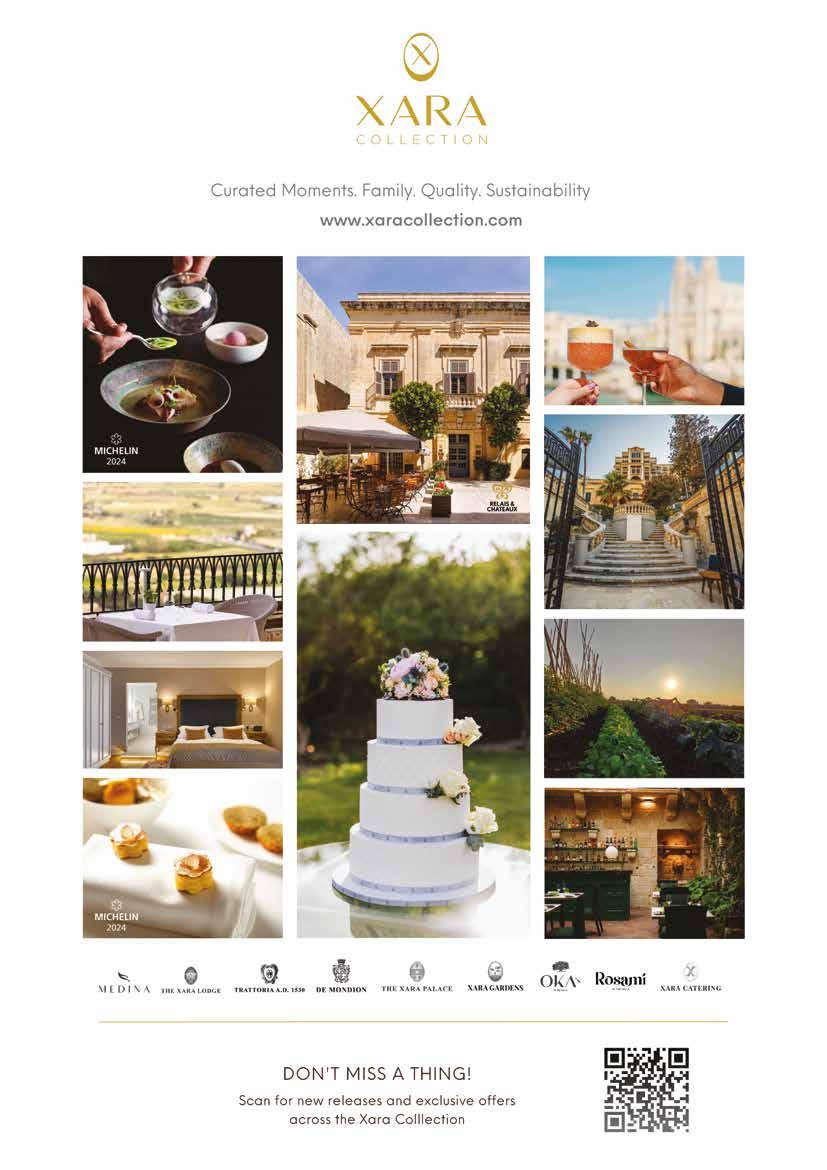

Cars from Italy, Germany, Japan, and India, along with those from Malta, each showcased a diversity of automotive art. These vehicles adorned Valletta’s main square and served as a unique scene
for the eight artists taking part in a live painting competition, which was won by artist Nathan Saliba.
A week-long collective art exhibition, where sixteen local and foreign artists exhibited their works at Saint Dominic Hall in the Kings Own Club, concluded on the day of the Concours d’Elegance, ensuring that art met art.




The 1928 Rolls-Royce Phantom Prototype, internationally known as 17EX and owned by Mr. Yohan Poonawalla, won the Best in Show
Award and the Commemorative 120th Anniversary Rolls-Royce Award. This car, formerly owned by the Maharaja Bahador of Jammu and Kashmir, was making its first public appearance since being purchased by the world-renowned car collector from India.









Another interesting car that won several awards was a 1951 FIAT GT Zagato 750 MM, previously part of the Mille Miglia, owned by Mr. Hidetomo Kimura from Kyoto, Japan.
Other Best in Class winners included an impressive 1935 Rover 14 Sport Saloon, a 1968 Jaguar 240 MkII, a 1965 Porsche 911, a 1959 Corvette C1, a 1973 Alfa Romeo Montreal, a 1969 Ferrari 365 2+2, a 1994 Lancia Delta HF Integrale EVO Pink, a 1951 Austin Devon A40, and a 1969 Morris Mini Traveller.






New introductions at this year’s Valletta Concours were the Classic Motorcycle Class and, uniquely for a Concours d’Elegance, a Pedal Car Class. The latter was a great success and will be included among the other classes in years to come.




In 2022 the Valletta Concours was shortlisted as a Rising Star Event in Octane Magazine’s Historic Motoring Awards held in London, while the 2023 Valletta Concours was shortlisted for Best Concours. This year’s spectacular event is well
positioned to continue on its path of earning awards and hearts.
Plans are already underway for 2025, and the date for the next Concours d’Elegance will be announced shortly. For more information and to keep updated visit www.vallettaconcours.com, Facebook vltconcours








As a Directorate for the Early Years, Languages and Humanities (DELH), operating within the Department for Curriculum, Lifelong Learning and Employability (DCLE) at the Ministry for Education, Sport, Youth, Research and Innovation, the Director, Ms Alexandra Ebejer, the Assistant Director and a team of 26 Education Officers are committed towards ensuring that all learners, irrespective of any individual challenges, thrive through a holistic curricular experience that aims to secure skills, aptitude and readiness for employability while in compulsory education and in further and higher education.
This vision is possible through the continuous dialogue with the Director General for DCLE who is responsible for all assessment matters within the Education Assessment Unit (EAU) and through the wider networking with different stakeholders according to need and priorities. Driven by the National Curriculum Framework (NCF), the Learning Outcomes Framework (LOF) and the newly launched National Education Strategy (NES) for 2024-2030, the DELH incessantly commits towards successful learning and assessment through transformational leadership and management. Furthermore, by investing in ongoing professional development to sustain the timely curricular expertise of its team, the DELH further deliberates on educators' upskilling and reskilling to address priorities, such that the learning experience is led by innovative child-centred pedagogies where each learner matters, and where persistently, successful learning and assessment is a possible outcome.
“What, perhaps, is relevant to my new painting in Malta is that the close and constant proximity of the ancient, mythological and Neolithic past has reinforced my orientation from the physics of art to its biological and psychological content.”

Victor Pasmore, 1972

Victor Pasmore is regarded as one of the most prominent leading figures in the modern art movement of the 20th century both locally and internationally. During the three decades he spent living in Malta, Pasmore underwent an artistically experimental phase, during which he produced some of his most notable work. The artwork he created during this period is now being exhibited at The Eye & the Symbol, The Permanent Collection, at the Victor Pasmore Gallery at APS House, St Paul Street, Valletta. An array of never-seen-before artworks and familiar ones are on show for this exhibition, taking viewers on a journey that examines Pasmore's relationship with the Maltese islands through the various characteristics, mediums and materials he utilised during the final three decades of his life.
Photography courtesy Fondazzjoni Patrimonju Malti.



Pasmore tirelessly sought to present his art as a creation that was not restricted by a sense of place and time, however, it is possible that being so close to Malta’s primitive and ancient past may have subconsciously awakened untapped aspects in the artist’s mind, creating a quasinostalgic abstraction of place, space and time within Pasmore’s later work.
In 1966 Pasmore and his wife, Wendy moved to Malta and chose a secluded farmhouse in Gudja as their permanent residence. This provided Pasmore with the closed confines he craved to develop new art forms and rediscover light and colour. While living in Malta, Pasmore used the many hardware stores around the island from which he regularly sourced materials to create his abstract works.
The Victor Pasmore Foundation was set up in July 2012 by his wife and his two children, John and Mary Ellen (Nice), to conserve and promote his art as a significant testimony to 20th-century art.
In 2014, the Central Bank of Malta agreed to permanently host Pasmore’s work at the Polverista Gallery in Valletta. Fondazzjoni Patrimonju Malti took over the collection’s management the following


year, bringing to light the Maltese modern art movement and Pasmore’s influence on its direction. In 2020, further to an agreement with the Victor Pasmore Foundation, Fondazzjoni Patrimonju Malti became the custodians of the artworks, and in 2021 transformed the former APS headquarters at St Paul Street, Valletta into a state-of-theart gallery that would house the Victor Pasmore collection.
Today, Fondazzjoni Patrimonju Malti manages the Victor Pasmore Gallery which seeks to preserve the artist’s legacy through an engaging range of exhibitions, events and programmes showcasing the work of Pasmore and his Maltese peers. Furthermore, the Gallery is dedicated to researching, assisting and participating in the realisation of further studies into Pasmore’s work. The Gallery's inaugural exhibition In Search of Line, which closed in March, showcased the institution's aim to explore new ways of engaging with 20th-century Maltese art and offered a taster of future projects.
The Victor Pasmore Gallery is located at APS House, 275, St Paul Street, Valletta. Open Tuesday to Thursday 10am to 5pm (last entry 4pm), Friday 2pm to 7pm (last entry 6pm), Saturday 10am to 3pm (last entry at 2pm). Tickets can be purchased at the door. For further information visit www.victorpasmoregallery.com/the-eye-and-the-symbol


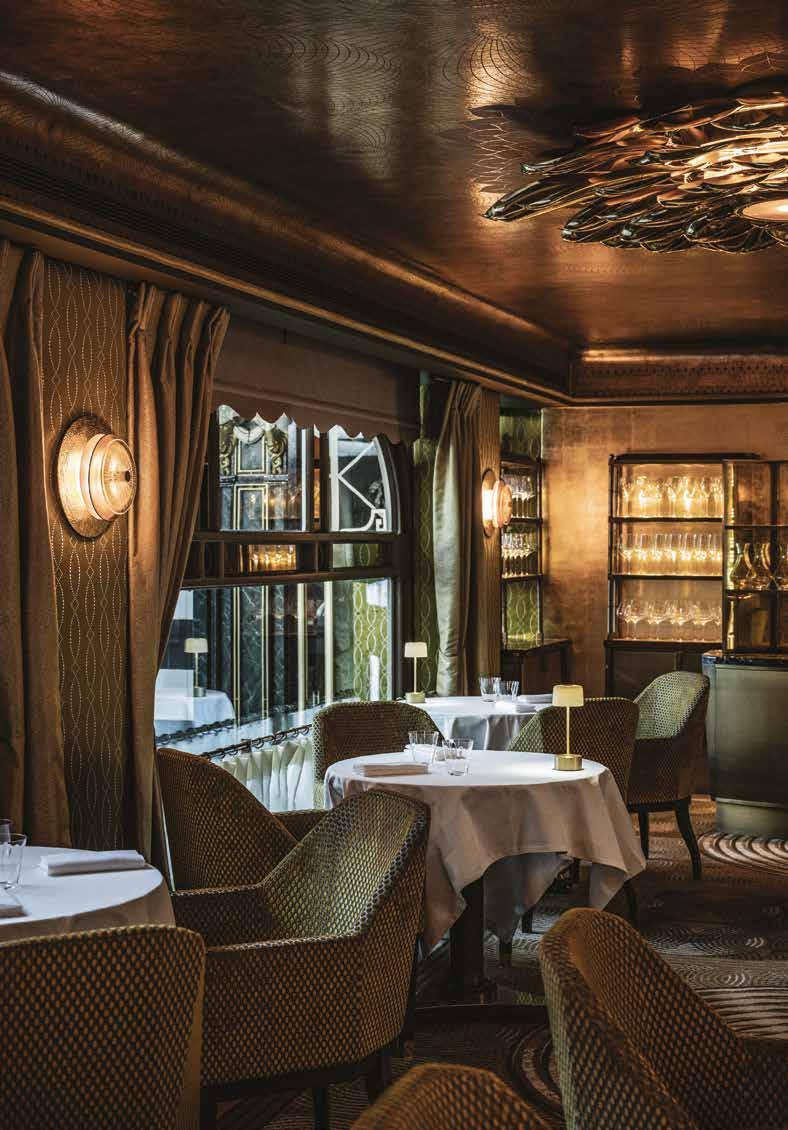
“If you want to become a great chef, you have to work with great chefs. And that’s exactly what I did.”
Gordon Ramsay

In the year 1890, Georges Auguste Escoffier joined The Savoy Hotel and began creating his culinary legacy, including the creation of the Peach Melba, a dish to honour the opera singer Nellie Melba during her stay at the hotel. Restaurant 1890 by Gordon Ramsay pays tribute to Escoffier whilst offering an intimate dining experience serving just 24 guests. With a modern French tasting menu with European influences, the dishes are created from the finest ingredients sourced from all corners of the world alongside a carefully curated wine list that has been awarded Three Star Wine List by the World’s Best Wine Lists 2023.
Photography courtesy Gordon Ramsay Restaurants and The Savoy, London.


Georges Auguste Escoffier, often regarded as the father of modern French cuisine, joined The Savoy Hotel in London in 1890. Escoffier's recruitment to The Savoy was orchestrated by César Ritz, the renowned hotelier who was appointed as the manager of the hotel. Ritz recognized the potential of The Savoy to become one of the finest hotels in the world and knew that exceptional cuisine would be key to achieving this vision. To this end, he enlisted Escoffier, who was already making a name for himself as a brilliant chef.



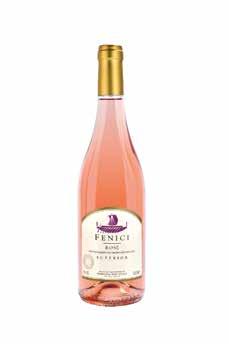










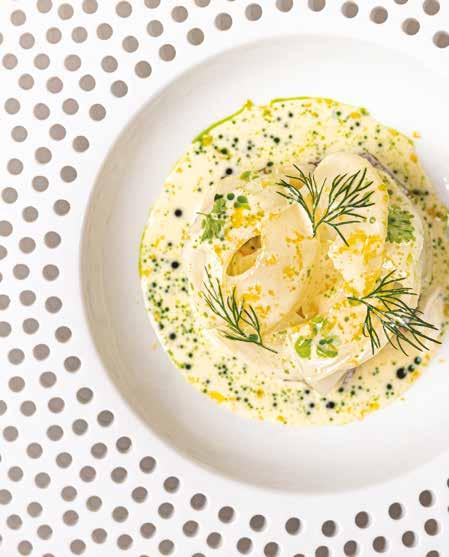



Top left: Delicate flavours: confit hen’s yolk, smoked sardine and white beetroot –served with sauce Albert.
Top and Above: The perfect ending: freshly baked madeleines and trio of sauces. Left: Cornish Red chicken with morels, asparagus and sauce Albufera.
At The Savoy, Escoffier revolutionized the hotel's kitchen and dining experience. He introduced a series of innovations that would forever change professional cooking and hotel management. Escoffier simplified and modernized the kitchen brigade system, creating a more efficient and hierarchical structure that allowed for specialization and better management of staff. Escoffier also emphasized the importance of high-quality ingredients, meticulous preparation, and elegant presentation.
He introduced a menu structure that included multiple courses served in a sequence, enhancing the dining experience with balanced and well-timed meals. One of his famous contributions during his time at The Savoy was the creation of iconic dishes like Peach Melba, named in honor of the Australian opera singer Dame Nellie Melba, who was a regular guest at the hotel. Under Escoffier's culinary leadership, The Savoy quickly gained a reputation for excellence, attracting a prestigious clientele that included royalty, celebrities, and influential figures of the time. Escoffier's tenure at The Savoy not only cemented his legacy as a pioneering chef but also elevated the status of the hotel to one of the premier luxury establishments in the world.
Fast forward to February 2022, and Restaurant 1890 by Gordon Ramsay opened its doors – with a tasting menu-only format, the beautiful and intimate restaurant serves just 24 guests, and pays a subtle homage to acclaimed chef Escoffier. Located in The Savoy Hotel, overlooking the famous Savoy Court, Restaurant 1890 is Gordon Ramsay’s third restaurant in this iconic London location.


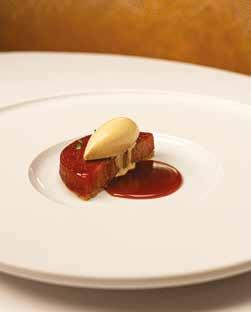
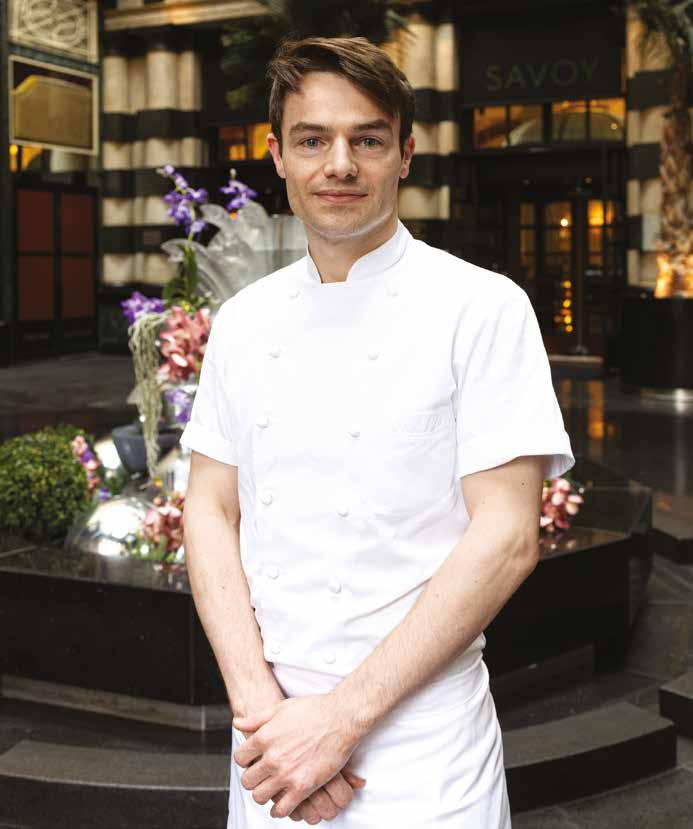
Given his TV persona, it’s almost easy to overlook Gordon Ramsay’s culinary achievements. His eponymous Chelsea restaurant celebrates a quarter of a century this year, the last twenty two of those with three Michelin stars. The chef’s restaurant group has earned seventeen stars over the years, and still holds seven. Ramsay’s early work is dotted with exceptional places and names, from Harvey’s under Marco Pierre White, to La Tante Claire under Pierre Koffman, via Le Gavroche for Albert Roux, and working in Paris Guy Savoy and Joël Robuchon. With such impressive experience,
customers are incredibly fortunate Ramsay has helped launch a wealth of talent himself. Not even counting the multitude of chefs who have staged in his restaurants all around the globe, Ramsay’s “stable” of head chefs is a modern who’s who of the culinary world such as; Marcus Wareing, Jason Atherton, Angela Hartnett and Clare Smyth.
Under the watchful eye of Gordon Ramsay, quality, harmony, personality, and consistency are embedded into the ethos of the menu at Restaurant 1890, and with Executive Head Chef James Sharp’s stunning culinary execution the restaurant has excelled and in February this year, received its first Michelin Star.


After discovering his love for cooking at university, James’ goal was to work at 3 Michelin Star, Restaurant Gordon Ramsay, an ambition he achieved, working his way through the brigade under the mentorship of Chef Patron, Matt Abe. After being a key part of the team at Gordon Ramsay’s Knightsbridge one star restaurant, Petrus, James then opened Restaurant 1890 in 2022. Here he’s revelling in the challenge of recreating and celebrating Escoffier’s recipes while bringing them into the 21st century. “You never stop learning, whether it’s a different cuisine, product, technique, or
skill. At Restaurant 1890 we strive to use these new skills to offer guests a unique dining experience while still respecting the excellence synonymous with the Gordon Ramsay name.”
A restaurant’s success is determined by more than just the kitchen. The guest experience at 1890 is led by General Manager, Sarah Rhone, elevating the restaurant to a place of excellence. For Sarah, the art of Front of House is “anticipating the guests’ needs before they know themselves.” The delicate dance of taking care of every detail of a guest's dining experience while simultaneously blending into the background is a skill Sarah and her team have perfected.


For many guests dining at Restaurant 1890 the wine pairings and selections are as special as the food. Many travelling to experience the one-of-a-kind wine selection curated by Group Head of Wine, Emanuel Pesqueira. The wine list has been awarded Three Star Wine List by the World’s Best Wine Lists 2023. Emanuel, regarded as one of the 10 best sommeliers in the United Kingdom, believes that “Wine is about the feelings it stirs inside you.” With access to The Savoy’s constantly evolving and remarkable cellar, Emanuel, and the 1890 sommelier team, perfect the once-in-a-lifetime experiences for their restaurant guests–be that a Madeira dating back to 1705, or a glass poured from a 27-litre bottle.
Overseeing Malta's Iconic Fresh Food Markets
• Promoting Quality Local Food & Expanding Access to Markets
• Cultivating Partnerships for Sustainable Growth
• Empowering Markets with Modern Digital Solutions
• Assuring value to local food producers
At the Malta Food Agency, we're dedicated to leading Malta's exceptional local food products to new horizons. Join us in our mission to promote quality, strengthen markets, and foster lasting partnerships.
“In all things of nature there is something of the marvelous.”
Aristotle

NOTES ON GREEN

In small countries like Malta, the regeneration of open spaces and urban greening is crucial for creating healthier, more sustainable communities. These initiatives not only enhance the aesthetic appeal of urban areas but also offer a myriad of environmental, social, and economic benefits.

Photography Mdina, Luca Timpano. Facing page Junaid Khan.

Malta, with its limited land area and dense population, faces unique challenges. However, it also stands to gain significantly from efforts to green urban spaces. Greening urban areas involves the introduction and expansion of parks, gardens, green roofs, and tree-lined streets. These efforts can transform the landscape, creating oases of greenery amid a jungle of concrete.
The environmental benefits of urban greening are profound. Trees and plants play a crucial role in improving air quality by absorbing pollutants and releasing oxygen. Increasing green spaces can lead to healthier, cleaner air for all residents, mitigating effects of pollution from traffic congestion. Additionally, green spaces help mitigate the urban heat island effect, where built-up areas become significantly warmer than their rural surroundings. By providing shade and cooling the air through transpiration, vegetation can reduce temperatures, making urban areas more comfortable during hot Maltese summers.
Beyond the environmental advantages, the social benefits of urban greening are equally compelling. Green spaces provide residents with areas for recreation, relaxation, and social interaction, and can serve as community hubs, fostering social cohesion and improving the overall quality of life. For children, access to parks and green spaces is crucial for physical activity and play, contributing to their physical and mental well-being.
Economically, greening urban areas can increase property values and attract tourism. Well-maintained parks and gardens can make cities more attractive to visitors, boosting local businesses and contributing to the economy. Furthermore, the presence of green spaces can enhance the appeal of residential and commercial properties, leading to higher real estate values.
Where space is at a premium, innovative approaches to urban greening are essential. Vertical gardens, green roofs, and the transformation of underutilized spaces into community gardens are just a few examples of how the island can maximize its green potential. The regeneration of open spaces and urban greening holds immense promise, and ultimately can create a healthier, more vibrant environment for current and future generations.
“If the bee disappears from the surface of the Earth, man would have no more than four years left to live.”
Albert Einstein

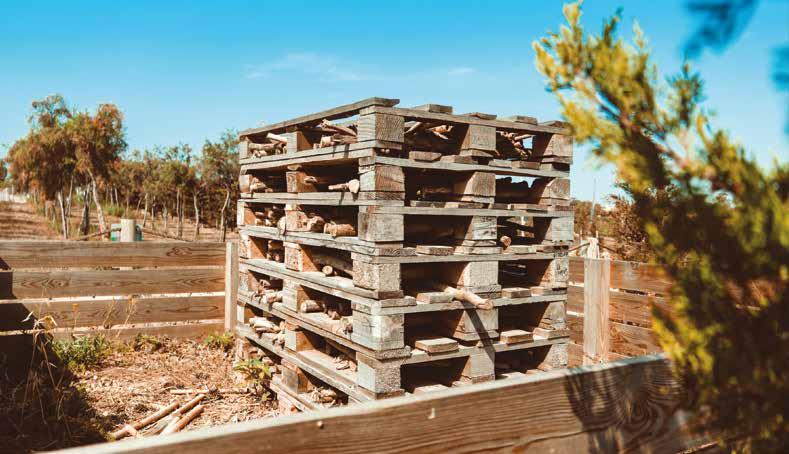
Transforming grey roofs into green havens for bees and butterflies, has become a growing trend in urban design. Climate change, human activity, and pollution has driven countries worldwide to adopt measures like 'living roofs' to reintroduce vital pollinators into urban areas. They demonstrate the importance of environmental consciousness and sustainability, showcasing how small urban design changes can significantly impact the environment. Green rooftops enhance urban spaces aesthetically by adding splashes of colour and greenery, which improves the overall quality of life for residents. They also represent a holistic approach to urban planning, highlighting the connection between human activities and the natural world. They are a small yet impactful step towards a more sustainable, biodiverse, and environmentally conscious future, writes the projects team at Project Green.
Photography Project Green.

Project Green acknowledges the critical role of pollination in maintaining strong, healthy ecosystems. It recognises the fact that urban biodiversity relies on pollination, and green infrastructure, such as gardens, parks, and green roofs, providing essential habitats for pollinators while contributing to residents' well-being.
When we think of pollinators the first insect that springs to mind is the humble bee. The famous physicist Albert Einstein was once quoted to have said "If the bee disappears from the surface of the Earth, man would have no more than four years left to live".
So why are bees so important? Well they (and other pollinators such as birds, bees, bats, butterflies, moths, beetles, other insects, mammals, water, or the wind) provide a crucial biological mechanism involving the transfer of pollen from the male part of a flower (anther) to the female part (stigma) of the same or another flower. Pollen from a flower’s anthers rub or drop onto a pollinator, such as bees, and they transport the pollen over to another flower. This process is vital for the development of many plant species and the sustenance of ecosystems.
Pollination is the process by which plants reproduce, ensuring the creation of offspring for the next generation. Pollination is essential for producing seedlings, or baby plants, and provides substantial benefits to humans and the environment by enabling the growth of fruits, vegetables, and other crops.
In Malta, the Maltese Honey-Bee (Apis mellifera ruttneri), an endemic subspecies, plays a crucial role in local pollination. However, the population of this subspecies has been declining, raising concerns among scientists and conservationists. The Maltese Honey-Bee is essential for maintaining the ecological balance and supporting agriculture in Malta, making its preservation a priority for the local environment and economy.
What has Project Green done so far to support pollination?
Pollinators are crucial to our ecosystems, playing a vital role in pollinating plants, including many of the crops that provide our food. Project Green recognizes the importance of creating safe and welcoming spaces for pollinators in urban environments, which in turn supports their populations and agriculture.
PLANTING TREES: Project Green has planted trees such as Cercis siliquastrum (Judas Tree) and Vitex agnus-castus (Chaste Tree) to support pollinators.
SAN GWANN: Establishing gardens like the one in San Gwann to educate the public about pollinating species and their importance. These gardens provide habitats for pollinators, enhance local biodiversity, and serve as community engagement tools. They demonstrate that small changes in urban design can significantly positively impact our environment.
BENGĦAJSA FAMILY PARK: Installing structures like bug hotels to attract and support various pollinators, including bees and other insects. These structures boost biodiversity by providing safe refuges for pollinators, supporting the pollination of local plants.


GREEN ROOF SPACES: Similar to the greening of the parking shelters rooftops that Project Green manages in Zabbar, this pilot project will be transforming a bus stop rooftop into a green space with pollinator-friendly plants encouraging the growth of various plant species, providing habitats for bees, butterflies, and other insects and small animals. This increase in biodiversity contributes to healthier and more resilient urban ecosystems. The idea was first pitched by the Gzira Local Council and has been taken up by Project Green who have worked on developing this idea which will soon be implemented. If this pilot project turns out to be a success, it can be implemented in other localities.
Incorporating green roofs with species such as Helichrysum angustifolium (Curry Leaf), Lavandula multifida (Fern-leaved Lavender), and Jacobaea maritima (Sicilian-Silver Ragwort) supports pollinator species, enhances pollination in urban areas, increases urban biodiversity, and raises public awareness about the importance of pollinators.
Supporting local pollination at home is simple and rewarding. Here’s how you can create a mini bee/bug hotel in 3 simple steps using readily available materials including a cleaned tin can; natural materials (such as hollow stems, sticks, pinecones, dried grass, rolled-up paper); and string for hanging.
1.PREPARE THE CAN: Clean the tin can thoroughly to remove any sharp edges. Decorate it if desired.
2.FILL THE CAN: Pack the can tightly with natural materials to provide nesting spots for bees and other insects.
3.PLACE THE HOTEL: Securely tie strings around the can for hanging or place it horizontally on a shelf or wall in a sunny, sheltered area near flowering plants. This homemade bee/bug hotel serves as a safe refuge for solitary bees, supporting pollination efforts and boosting biodiversity in your neighborhood. By taking such small steps, you can contribute to the health of local ecosystems and the broader environment.



Let's face it, for most of us saving money can often seem like an uphill battle. The allure of fast fashion, eating out or going for cocktails, weekend breaks, the latest mobile phones and new gadgets you never knew you needed can make it difficult to resist the urge to splurge. However, the importance of saving money and achieving financial security cannot be overstated. A concrete and realistic savings plan ensures a better quality of life now while paving the way for a secure and comfortable future. Here's why saving money is crucial and how you can become a savvy saver at any stage of life.
Photography Arno Senoner.

Saving money is more than just a financial strategy; it's a mindset and a commitment to your future self.
Financial security means having the peace of mind that comes with knowing you have a cushion to fall back on in times of need. It allows you to handle unexpected expenses, invest in opportunities, and enjoy life without constantly worrying about finances. Achieving this requires discipline, planning, and sometimes, a bit of creativity.
The reality is that having an emergency fund is essential. Life is unpredictable, and whether it’s a medical emergency, car repair, or sudden job loss, having three to six months' worth of living expenses saved can make a world of difference. Moreover, savings can open doors to investment opportunities that can significantly grow your wealth. Whether it's real estate, stocks, or a new business venture, having capital ready can help

you seize these chances when they arise. Additionally, savings can keep you from falling into the debt trap. Instead of relying on credit cards or loans for major purchases, you can use your savings and avoid paying hefty interest rates. Building a retirement fund is another critical aspect of saving, ensuring you can maintain your lifestyle and independence in your golden years. The earlier you start, the more you benefit from compound interest, making your future more financially secure. Investing in the stock market or well-rated bonds is a prudent way to grow your savings over time. While saving money is foundational, investing can provide higher returns, helping you achieve financial goals more quickly. The stock market offers the potential for significant growth, especially if you invest in a diversified portfolio. However, it's essential to understand the risks involved and invest wisely. Working with a financial advisor or doing thorough research can help you make informed decisions. Bonds, particularly well-rated ones, offer a more stable investment option. They provide regular interest payments and are less volatile than stocks, making them a suitable choice for conservative investors or those nearing retirement.
Not all ways to save money are immediately obvious. Embracing minimalism can lead to substantial savings. By buying less and choosing quality over quantity, you can save money and create a more organized living space. DIY projects, from home repairs to crafting gifts, can save money and be highly rewarding. Learn basic skills through online tutorials and take on projects instead of hiring professionals for everything. Shopping at thrift stores and online marketplaces can be treasure troves for quality items at a fraction of the cost. This not only saves money but is also environmentally friendly. Setting up automatic transfers from your chequing account to your savings account can make saving a regular habit and reduce the temptation to spend the money instead.
In a world designed to make you spend, staying focused on your savings goals can be challenging. Setting clear goals can help. Define

your short-term and long-term financial goals. Having a clear picture of what you're saving for can keep you motivated. It’s okay to indulge occasionally, but do it within a budget. Allocate a small portion of your income for discretionary spending, so you can enjoy it without guilt. Educating yourself about personal finance is also crucial. The more you know, the better you can manage your money and resist unnecessary spending. Practicing mindful spending can help as well. Before making a purchase, ask yourself if it’s a need or a want. Delaying gratification can often lead to better decision-making. Finally, reducing exposure to advertisements by unsubscribing from promotional emails and avoiding unnecessary browsing on shopping sites can help you stay on track.
Achieving financial security and saving money is an ongoing process that requires dedication and smart strategies. By understanding the importance of saving, setting clear goals, and employing practical tips, you can navigate temptations and build a secure financial future. Remember, every small step towards saving can make a significant difference, allowing you to live a better life both now and in the years to come.



SAVING AND MINDFUL

In today's world, where trends change quickly and new technologies always try to grab our attention, saving money can often feel very hard. However, being disciplined and trying to achieve financial security through regular savings is of utmost importance. In this way we can improve our quality of life, reduce stress, and provide a safety net for unexpected events which may occur during our lifetime, writes Mark Bezzina, B.Com (Hons) (Melit), Pension and Private Pension Expert at ĠEMMA.
Nowadays, people from all over the world are increasingly driven by instant gratification and consumerism and this is often making saving money a difficult task. The introduction of digital payment methods has worsened the situation, where we can often lose track of our spending and end up spending more than what we actually afford.
Saving money will provide many benefits that can significantly enhance our financial well-being. Creating an emergency fund for example, will act as a safety net to counter against any unforeseen expenses such as medical expenses and motor vehicle expenses to name a few. Having your own savings will also lead to financial independence, allowing you to make choices without being dependant on others or on your next salary.
Additionally, and most importantly, saving money will also enable you to invest into different forms of investments which can grow your wealth over time. We also tend to forget that the state pension on its own might not be enough to sustain our current standard of living. Hence, building a retirement fund will ensure that you can maintain your lifestyle and cover your usual expenses in your retirement years.
In your thirties, start an emergency fund and save for retirement. Try to set automatic payments because these will help you to save regularly and consistently.
In your forties, increase your emergency fund and create a nest egg for your children. To ensure your children have the best opportunities in the future, it is important to save and create a nest egg for them. While education in Malta is free and higher education students receive a stipend, with Master's programs often reimbursed by the government, many future needs and aspirations still require financial preparation. Review your investments regularly to ensure they
match your risk tolerance and retirement goals.
As you enter your fifties and retirement nears, it's important to prioritise your private retirement schemes and maximise your contributions in them accordingly. Cut unnecessary expenses. Here, start to think as well of any healthcare needs that you might require in the coming future.
As you enter your sixties and later years, focus on preserving your savings at this stage. Avoid high-risk investments and ensure you have enough liquid assets for living expenses. Enjoy life and your retirement savings.
There are other ways and methods on how to save money. Despite being obvious, try to practice mindful spending - questioning every purchase that you make. Remember that a penny saved is a penny earned. Try to buy energy efficient appliances and avoid leaving the lights on before leaving home. Different subscriptions can also add up quickly. Try to remove those that you do not use often. Do you really need to buy the latest smartphone every year?
In conclusion, gaining financial security needs a positive and strategic approach to save money. We must understand the importance of saving money, limit our expenses and adapt the right investment strategy according to our age and ultimately, according to our needs. In today’s world, being a wise spender and a wise investor is a necessity if we are to achieve financial stability and live a comfortable life.
This article is intended for informational purposes only and does not constitute financial advice. For personalized financial guidance, please consult with your investment advisor.

CHASING THE SUN THIS SUMMER? HERE'S YOUR ESSENTIAL SUMMER GUIDE TO SUN PROTECTION AND SKIN CARE

of sun protection and skincare. Embracing a regimen that includes the diligent use of sunscreen products not only preserves your skin's youthfulness but also shields it from the long-term negative effects of sun exposure. From hyperpigmentation to melanoma, the results of neglecting sun protection are significant. Here’s your ultimate guide to understanding the importance of sun protection, choosing the right sunscreen, and maintaining flawless, healthy skin.
Photography Santorini, Greece. This page Stijn te Strake, overleaf Massimiliano Donghi and Raphael Lopes.


While being an instant mood booster and a source of vitamin D the sun's ultraviolet (UV) rays pose a formidable threat to your skin. There are two main types of UV rays to be concerned about: UVA and UVB. UVA rays penetrate deep into the skin, causing premature aging and long-term damage, while UVB rays are responsible for sunburn and direct damage to the DNA in your skin cells, which can lead to skin cancer.
Hyperpigmentation, characterized by dark patches on the skin, is a common concern exacerbated by sun exposure. This condition occurs when an excess of melanin, the pigment that gives skin its colour, forms deposits in the skin. The sun’s UV rays can trigger the melanin overproduction leading to these dark spots. Other causes include hormonal changes, inflammation, and certain medications. Preventing hyperpigmentation starts with rigorous sun protection. Using a broad-spectrum sunscreen that shields against both UVA and UVB rays is essential. Products containing ingredients like niacinamide, vitamin C, and hydroquinone can help fade existing dark spots and prevent new ones from forming. Consistent use is of course key; apply sunscreen daily, even on cloudy days.
The quest for youthful skin is a battle against premature aging caused by sun exposure. UV rays accelerate the breakdown of collagen and elastin, which maintain skin firmness and elasticity. This results in wrinkles, fine lines, and a loss of youthful volume. Known as photoaging, this process can significantly age your appearance well beyond your years.
Incorporating sun protection into your skincare routine is a crucial. Sunscreens with added antioxidants like vitamins E and C can provide additional defense against free radicals, which are harmful molecules generated by UV exposure that further damage skin cells.
Melanoma, the most dangerous form of skin cancer, arises from the pigmentproducing melanocytes in the skin. It can develop anywhere on the body and is often linked to intense, intermittent sun exposure that leads to sunburn. Other types of skin cancer, such as basal cell carcinoma and squamous cell carcinoma, are also primarily caused by UV radiation. Preventing skin cancer starts with understanding and mitigating your risk. Regularly applying a broad-spectrum sunscreen with an SPF of at least 30, wearing protective clothing, and seeking shade during peak sun hours are crucial steps. Conduct regular skin self-exams and consult a dermatologist annually for professional skin checks.



When selecting a sunscreen, the options can be overwhelming. Here’s what to consider for optimal protection:
1 BROAD-SPECTRUM PROTECTION: Ensure your sunscreen protects against both UVA and UVB rays. Broad-spectrum formulas offer comprehensive coverage.
2 SPF 30 OR HIGHER: Choose a sunscreen with an SPF of at least 30, which blocks 97% of UVB rays. Higher SPFs offer marginally better protection but should not replace regular reapplication.
3 WATER RESISTANCE: For those who swim or sweat, a water-resistant sunscreen provides longer-lasting protection. Remember to reapply every 40 to 80 minutes, as indicated on the label.
4 ACTIVE INGREDIENTS: Look for physical blockers like zinc oxide or titanium dioxide, which reflect UV rays, or chemical absorbers, which absorb and neutralize UV radiation.
5 SKIN TYPE COMPATIBILITY: Choose a formula suited to your skin type. For oily or acne-prone skin, non-comedogenic, oil-free sunscreens are ideal. For sensitive skin, fragrance-free and hypoallergenic options are preferable.



While sunscreen is a powerful tool, it’s also important to limit sun exposure during peak hours. The sun’s rays are strongest between 10am and 4pm, so seek shade or indoor activities during this time. When outside, wear widebrimmed hats, sunglasses with UV protection, and clothing made from tightly woven fabrics to physically block the sun.
Sun protection is not just a summer fling; it’s a yearround commitment to your skin’s health and beauty. By understanding the risks associated with UV exposure and incorporating effective sun protection strategies, you can maintain radiant, youthful skin while safeguarding against serious health concerns like hyperpigmentation, premature aging, and skin cancer.



€22,950

GasanZammit Motors Ltd., Triq il-Merghat, Zone 1, Central Business District, Birkirkara, CBD 1020 Tel: 27788229 email: mazda@gasanzammit.com mazda.com.mt